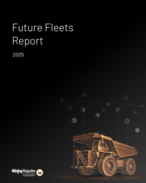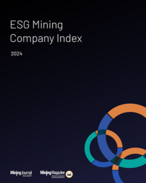This article is 12 years old. Images might not display.
The study represents the views of 374 mining companies around the world – with respondents being mainly C-level executives, vice-presidents and directors. It was completed late last year.
When asked to identify their priorities by level of importance, they replied:
- Ensuring workforce safety (31%)
- Managing capital projects (25%)
- Maximizing production effectiveness (21%)
- Ensuring equipment operates reliably and predictably (8%)
- Ensuring different departments work together (4%)
- Minimizing the variance between mine plans and execution (3%)
- Recruiting and retaining a skilled workforce (2%)
The fact that 69% of mining executives willingly claim operational performance to be more important than safety will surely be startling to some.
But analysis of the annual survey has suggested that a general streamlining trend in the mining industry may be just what workplace safety needs.
Ventyx’s senior vice-president of mining industry solutions, Bas Mutsaers, said the data reflected an increase in safety focus due to macro industry pressures curbing more ambitious agendas.
“Our research shows the mining industry remains cautious about the strength of global economic recovery,” he said.
“In response, many mining organizations have begun looking inward, especially in regard to the labor market. In doing so, they have shifted their focus from finding qualified workers anywhere, at any cost to ensuring the workforce they currently have is efficient, well-informed and safe.
“At the same time, these companies aren’t seeing a tradeoff between worker safety and profitability. In other words, the same technologies and best practices that improve safety also improve performance and efficiency.”
Ventryx said the study demonstrated how closely mining executives correlated worker safety and mine productivity.
When asked to identify their primary safety initiatives, nearly two-thirds (64%) of respondents selected “development of skills, best work practices and situation-based decision making.”
“As companies equip their workforces with new technologies – such as mobility solutions that enable faster access to information, regardless of location – they are finding they can change their traditional approach to training and skill development,” Mutsaers said.
“There is definitely an opportunity for mining organizations to leverage emerging technologies to transform how they educate and empower their workers to reduce safety incidents and improve efficiencies.
“By delivering on-demand information to the point of work, for example, new mobility solutions can reduce the need to train workers for every possible situation while equipping them to make better on-the-spot decisions.”























